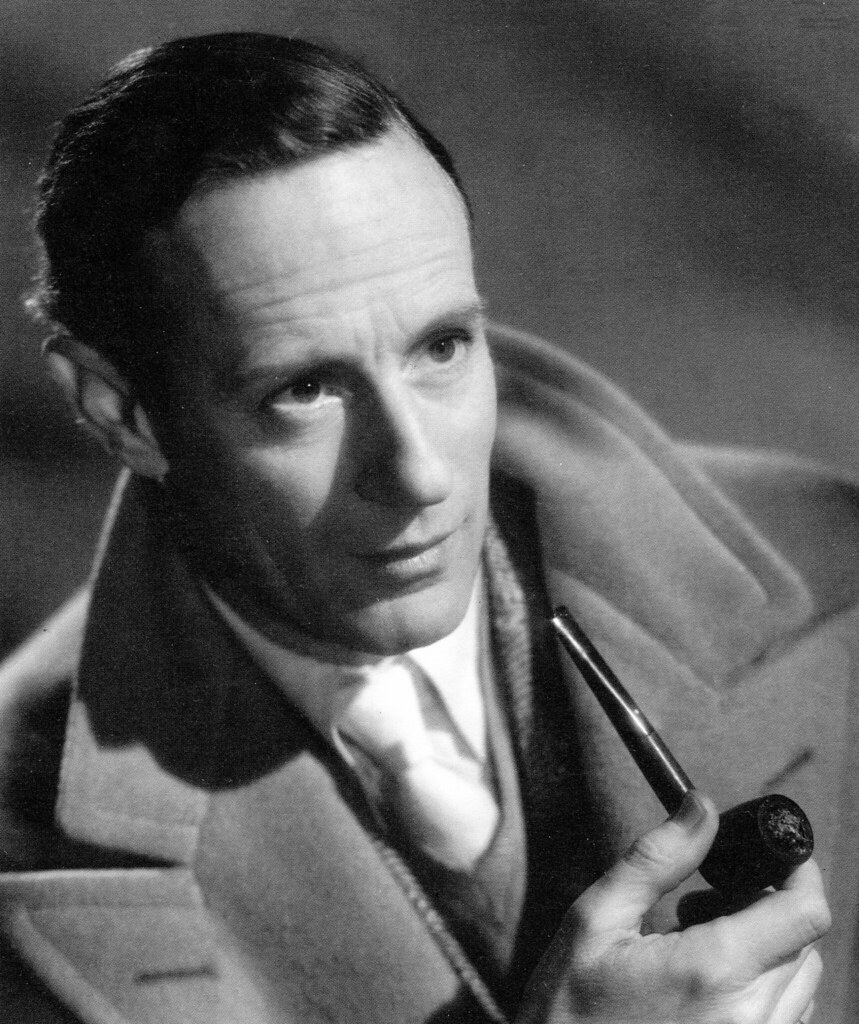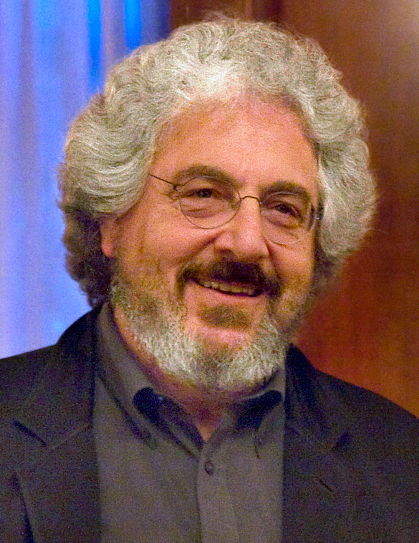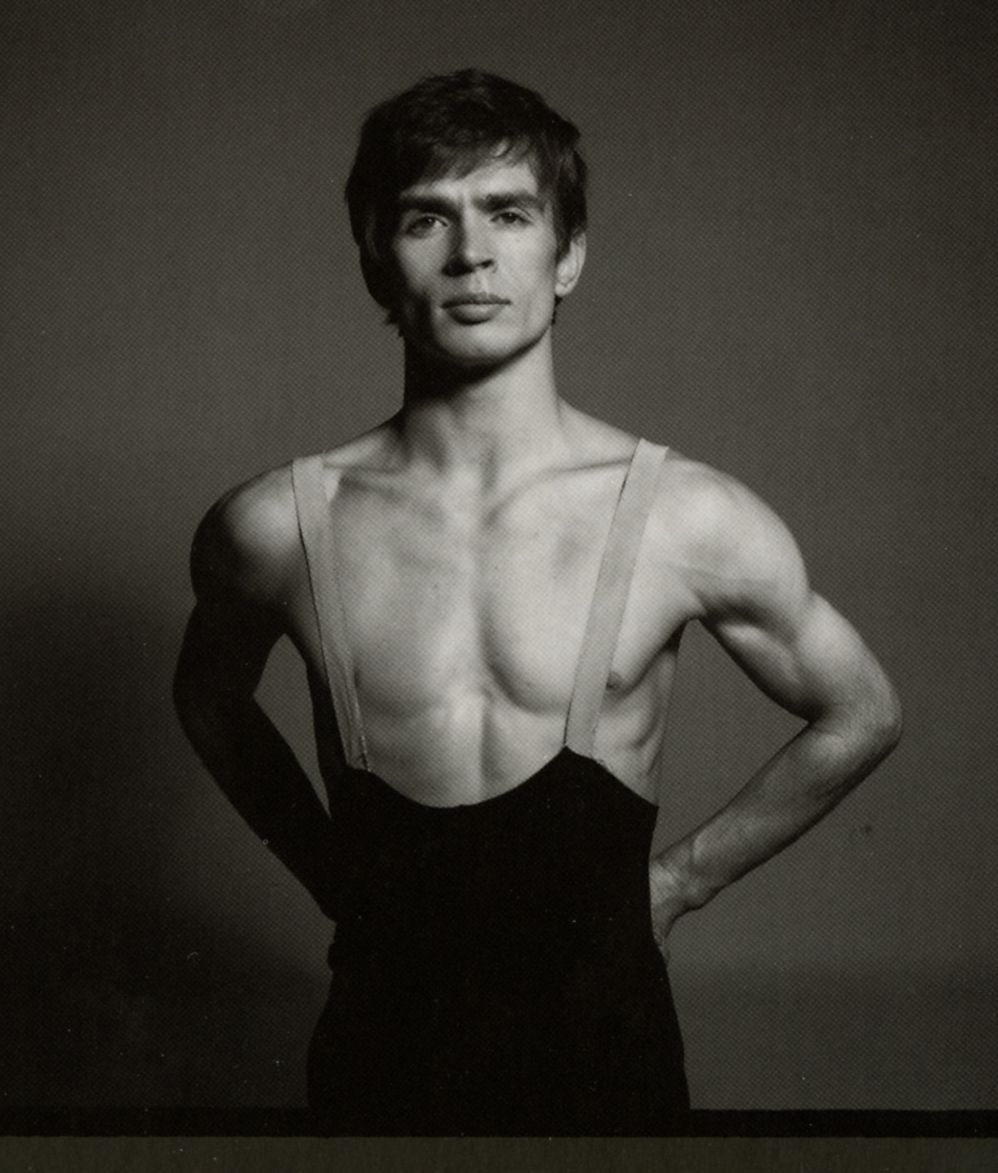
On World AIDS Day, December 1st, we pause to reflect on a global movement that unites people in the ongoing fight against HIV and AIDS. Since its inception in 1988, this commemorative day has served as a crucial moment to remember the more than 35 million individuals who have succumbed to HIV or AIDS-related illnesses over the past four decades. It is also a vital occasion to confront the pervasive discrimination faced by the 105,000 people living with HIV in the UK and the 38 million globally, underscoring the necessity of continued awareness, compassion, and progress.
Today, we embark on a journey through history, turning our attention to a collection of queer heroes whose extraordinary talents and achievements captivated audiences worldwide. These remarkable individuals, celebrated for their artistry and their often pioneering spirits, faced the profound challenges of HIV and AIDS in decades past. Though they are gone, their contributions remain etched in our collective memory, serving as powerful reminders of their enduring impact and the devastating toll of the disease.
In honoring these late, great stars, we aim to not only celebrate their lives and professional triumphs but also to acknowledge the personal struggles they navigated during a challenging era. Their stories, some openly lived, others revealed posthumously, illuminated the human face of a global crisis and, in many instances, catalyzed significant shifts in public perception and understanding. Their legacies are not just about the art they created, but also about the courage they embodied, often in silence, shaping conversations and advocating for change even after their passing.

1. **Freddie Mercury: The Unforgettable Frontman Who Changed Perceptions**As the impossibly charismatic frontman of the British rock band Queen, Freddie Mercury transcended musical boundaries and became a global phenomenon. His extraordinary vocal range, dynamic stage presence, and unique songwriting propelled Queen to sell over 300 million records worldwide. Iconic hits such as ‘Bohemian Rhapsody,’ ‘Radio Gaga,’ ‘Under Pressure,’ and ‘The Show Must Go On’ became anthems, showcasing a band that was innovative, theatrical, and profoundly impactful on the landscape of rock music. Mercury’s energy was infectious, captivating millions and cementing his status as a true rock legend.
Despite the widespread discussions and numerous widely-reported relationships with both men and women throughout the 1970s and 1980s, Freddie Mercury maintained a deliberate ambiguity about his sexuality in public. He rarely addressed it directly, instead playfully alluding to his queerness through his flamboyant, high-camp stage antics. His memorable appearance in a PVC miniskirt in the video for ‘I Want To Break Free’ is just one example of his audacious embrace of performance and self-expression. This enigmatic approach, rather than detracting from his appeal, only amplified his star power, adding an intriguing layer to his already magnetic persona.
Tragically, Freddie Mercury lost his life to AIDS-related causes on November 24, 1991, at the age of 45. This devastating news came shortly after he publicly disclosed his condition, a courageous act that sent shockwaves across the globe. His untimely death marked a pivotal turning point in the public’s perception of AIDS. It brought the reality of the disease into the homes of millions, attaching a recognizable and beloved face to a condition often shrouded in fear and stigma. In his memory, his bandmates established the Mercury Phoenix Trust, an AIDS charity dedicated to fighting the disease, ensuring his legacy continued to impact the world positively beyond his musical achievements.
Mercury’s impact extended far beyond his music; he became an unintended, yet profound, symbol in the fight against AIDS. His public acknowledgement of his illness, followed by his death, forced conversations and spurred greater awareness and empathy for those living with the virus. The Mercury Phoenix Trust stands as a testament to his enduring influence, channeling the energy and spirit of Queen into vital research and support efforts globally. His life and passing underscored the urgency of addressing the epidemic, transforming a personal tragedy into a catalyst for global action and remembrance.

2. **Howard Ashman: The Lyricist Behind Disney’s Renaissance**Howard Ashman was a brilliant lyricist whose creative genius breathed life into some of Disney’s most cherished animated films. His unparalleled ability to craft compelling narratives and heartfelt emotions through song lyrics helped to usher in what is now known as the Disney Renaissance. From the evocative ‘Part of Your World’ in The Little Mermaid to the spirited ‘Friend Like Me’ in Aladdin and the profound title track of Beauty and the Beast, Ashman’s words resonated deeply with audiences, creating timeless musical moments that continue to enchant generations. His contributions were central to the magical storytelling that defined an era for Disney animation.
Beyond his celebrated work, Howard Ashman was notable as one of the few openly gay men working in showbiz during the 1970s and 1980s. This was a period when such openness was rare and often met with significant challenges within the entertainment industry. His personal journey, however, was marked by profound pain; he endured the devastating experience of watching two of his ex-boyfriends succumb to AIDS. These deeply personal losses undoubtedly shaped his artistic output and imbued his work with an added layer of emotional depth and understanding of struggle and otherness, often subtle but always present.
Ashman’s battle with HIV and AIDS culminated in his death on March 17, 1991, at the young age of 40, attributed to heart failure resulting from the illness. In a remarkable testament to his dedication and creative spirit, he continued to work even from his deathbed, writing the lyrics for the Oscar-winning song ‘Beauty and the Beast.’ The film itself is dedicated to his memory, a poignant tribute to his extraordinary talent and his enduring legacy within the Disney canon. His ability to create such beauty amidst such personal turmoil speaks volumes about his artistic resilience.
One of the most striking aspects of Ashman’s work, revealed posthumously, is the subtle way he infused personal meaning into his lyrics, particularly concerning the AIDS crisis. The mob song ‘Kill the Beast’ from Beauty and the Beast, for instance, has been identified as a powerful metaphor for the stigma surrounding HIV and AIDS. The lyric, ‘We don’t like what we don’t understand,’ encapsulates the fear and prejudice that often fueled societal reactions to the disease. Through his art, Ashman not only entertained but also left a profound, coded message about empathy and the dangers of ignorance, demonstrating the power of creative expression to address complex social issues.

3. **Liberace: The Dazzling Performer Who Defied Categorization**Liberace, the flamboyant pianist and television actor, was a true spectacle of showmanship and a titan of entertainment. For a time, he held the distinction of being the world’s highest-paid entertainer, captivating audiences with his dazzling performances and extravagant persona. His popular ‘The Liberace Show’ drew some 30 million viewers, making him a household name and a beloved figure across the globe. He was recently immortalized on screen by Michael Douglas in the well-received 2013 drama ‘Behind the Candelabra,’ which also featured Matt Damon portraying his lover, Scott Thorson, bringing his complex life story to a new generation.
Known for his ultra-camp costumes, Liberace’s wardrobe was as much a part of his act as his musical prowess. His outfits typically featured an array of feathers, rhinestones, furs, and elaborate eight-foot trains, making him an unforgettable presence on stage. This elaborate sartorial style was a deliberate extension of his larger-than-life personality, designed to create an immersive, visually stunning experience for his audience. His aesthetic pushed boundaries, challenging conventional notions of masculinity and performance in a way that was both daring and undeniably entertaining.
Throughout his career, Liberace’s relationships with men were a frequent topic of discussion in gossip magazines. Yet, he consistently and vehemently denied his homosexuality in public. A notable instance occurred in 1956 when the UK’s Daily Mirror implied he was gay, leading Liberace to sue and receive £8,000 in damages. His famous quote, ‘I cried all the way to the bank,’ captured his public stance, even as private whispers persisted. It wasn’t until 2011 that his close friend, the beloved ‘Golden Girls’ star Betty White, publicly confirmed that Liberace was, in fact, gay, offering a posthumous clarity to his personal life that had long been shrouded in carefully constructed secrecy.
Liberace died on February 4, 1987, from AIDS-related causes, specifically cytomegalovirus pneumonia, a common opportunistic infection in individuals living with HIV/AIDS. His death, like many others of the era, brought a stark and tragic reality to light. The revelations about his private life and his battle with the disease, even if confirmed years after his passing, contributed to the broader public understanding of AIDS and the impact it had on individuals from all walks of life. His legacy remains that of a groundbreaking entertainer who, despite the pressures of his time, lived a life of extraordinary glamour and personal complexity.

4. **Anthony Perkins: From Norman Bates to a Private Battle**Anthony Perkins remains most widely recognized for his chilling and unforgettable portrayal of Norman Bates in Alfred Hitchcock’s unparalleled horror film ‘Psycho’ (1960). His performance as the mysterious and deeply disturbed motel owner earned him an enduring place in cinematic history, showcasing a profound talent for psychological depth and nuance. Beyond this iconic role, Perkins also received an Oscar nomination for his work in the 1956 war movie ‘Friendly Persuasion,’ demonstrating his versatility and range as an actor across different genres and character types, proving he was far more than just a horror icon.
Despite his public image and considerable fame, a less-known aspect of the handsome actor’s life was his history of sexual relationships with men. According to various biographies, some of these relationships were notably high-profile, involving fellow actors such as Tab Hunter and Rock Hudson. This private dimension of his life was largely kept from the public eye during an era when such revelations could severely impact a career. However, in 1973, Perkins married photographer and actress Berry Berenson, with whom he went on to have two sons, further adding to the complexity of his personal narrative and public perception.
Anthony Perkins died on September 12, 1992, at the age of 60, from AIDS-related causes. The circumstances surrounding when and where Perkins contracted HIV have remained unknown, adding a layer of mystery to his personal health battle. Notably, his family tested HIV negative, a detail that provided some measure of comfort amidst the tragedy. The profound sorrow associated with his passing was compounded years later when his wife, Berry Berenson, tragically lost her life as a passenger on American Flight 11 during the devastating events of 9/11, linking the family to another moment of national tragedy and grief.
Perkins’ story is a poignant illustration of the hidden struggles many public figures faced during the height of the AIDS epidemic. His ability to maintain a successful career while navigating deeply personal and often secret aspects of his identity speaks to the immense pressures and societal expectations of the time. The posthumous understanding of his life has enriched his legacy, adding a layer of empathy and revealing the silent battles fought by many, making his story a powerful component of the broader narrative of those lost to AIDS.

5. **Keith Haring: The Vibrant Artist and Activist**Keith Haring was an openly gay American artist whose distinctive style and vibrant imagery became instantly recognizable around the world. Though he often depicted gay sex in his work, using art as a vehicle for exploring sexuality and identity, he is perhaps best known for his iconic series of pop art-esque dancing stick figures. These joyful, energetic characters permeated public spaces and galleries alike, embodying a sense of movement and universal accessibility that made his art resonate with a broad and diverse audience. His playful yet profound imagery transcended traditional art boundaries, making contemporary art approachable.
Haring’s brightly colored, remarkably accessible creations were not merely aesthetic exercises; they actively engaged with and explored the pressing sociopolitical issues of his day. His art served as a powerful platform for advocacy, particularly concerning gay rights, AIDS awareness, and anti-drug campaigns. One of his most famous public works, the ‘Crack is Wack’ mural in New York, became an emblem of his commitment to social commentary. This mural’s enduring impact is evident, having even been referenced in Christina Aguilera’s ‘Can’t Hold Us Down’ music video, showcasing his art’s pervasive cultural influence and continued relevance.
Keith Haring’s life was also marked by his close relationships within the vibrant New York City art scene of the 1980s. He was an old friend of ‘Vogue’ singer Madonna, collaborating and sharing experiences as young movers and shakers shaping the cultural landscape. His artistic output was prodigious and relentless, driven by a keen awareness of the ephemeral nature of life and a desire to communicate his messages widely and urgently. This sense of urgency only intensified as the AIDS epidemic began to claim the lives of many within his community, including himself.
Tragically, Keith Haring passed away due to AIDS-related causes in February 1990 at the exceptionally young age of 31. His early death silenced a powerful artistic voice and deprived the world of further groundbreaking work. However, his legacy as an artist and activist endures. His work continues to inspire, educate, and provoke thought, reminding us of the importance of art as a tool for social change and personal expression. The Keith Haring Foundation continues to preserve and promote his artistic and philanthropic legacy, ensuring that his messages of love, activism, and unity remain relevant for generations to come.

6. **Rock Hudson: The Hollywood Icon Who Shattered Silence**Rock Hudson was an undisputed leading man during the Golden Age of Hollywood, an archetype of American masculinity whose dashing presence graced films like the dramatic epic ‘Giant’ (1956), where he starred alongside Elizabeth Taylor and James Dean. His impressive career spanned 38 years, solidifying his status as a star of both stage and screen, and earning him an Oscar nomination that underscored his significant contributions to cinema. Beyond the silver screen, Hudson also made an impact in television, notably in ‘Dynasty’, further cementing his image as a beloved and enduring public figure.
Yet, behind this carefully constructed facade of heteronormative masculinity lay a deeply private life. His marriage to Phyllis Gates from 1955 to 1958 is now widely accepted to have been a sham, a common arrangement in an era when Hollywood stars felt compelled to conceal their true identities. This understanding was profoundly reinforced when, years later, a recording surfaced of Hudson admitting to his then-wife that he was, in fact, gay. Such a revelation underscored the immense pressure and societal expectations placed upon public figures, particularly leading men, during that period.
A pivotal moment in the history of the AIDS epidemic, and indeed in celebrity culture, occurred on July 25, 1985. After months of intense public speculation regarding his health, Rock Hudson’s publicist confirmed that the actor had been suffering from AIDS for over a year. This brave and unprecedented disclosure made Hudson the first celebrity to openly declare himself HIV-positive, a monumental act that instantly shifted the global conversation around the disease. His confession, and the subsequent correct media surmising of his homosexuality, brought the reality of AIDS, and its disproportionate impact on the gay community, into mainstream consciousness like never before.
Less than three months after his public announcement, Rock Hudson tragically passed away on October 2, 1985, at the age of 59, succumbing to AIDS-related illness. His death, following his revelation, became a watershed moment, forcing a reluctant public to confront the human toll of the epidemic. It catalyzed increased awareness, reduced stigma, and spurred greater funding for research, transforming a personal tragedy into a catalyst for global change. A new documentary, ‘Rock Hudson: All that Heaven Allowed’, and various retrospectives continue to explore his life and career, ensuring his legacy as both a cinematic icon and a courageous pioneer in the fight against AIDS enduring.

7. **Rudolf Nureyev: The ‘Brando of Ballet’ Who Defied Boundaries**Rudolf Nureyev, often celebrated as “The Brando of Ballet” by the New York Times, was a Siberian-born master of expressive dance and a true cultural icon. His intense, flamboyant style and breathtaking performances were credited with introducing millions to classical ballet and simultaneously modernizing the art form, pushing its boundaries beyond traditional interpretations. Nureyev’s rule-breaking, trailblazing spirit extended beyond the stage, perhaps best epitomized by his celebrated defection to the West from the Soviet Union in 1961, a move that captivated the world and underscored his fiercely independent nature.
After his defection, Nureyev embarked on an illustrious career that saw him tour the world prolifically, captivating audiences with his virtuosity and charisma. He not only excelled as a performer but also took on significant leadership roles, including serving as the artistic director of the Paris Opera Ballet. His contributions to dance were immense, characterized by a dynamic blend of classical technique and a raw, passionate expressiveness that redefined what was possible in ballet. He became a symbol of artistic freedom and an inspiration to dancers and audiences across the globe.
Nureyev’s private life, like that of many public figures of his era, was the subject of much discussion and rumor. His male lovers were said to have included fellow dancer Robert Tracey, though the specifics of his relationships were often kept from the public eye during a less accepting time. Despite the societal pressures to conceal his true self, Nureyev continued to live a life dedicated to his art, pouring his passion and complexity into his performances. This dedication, coupled with his undeniable talent, ensured his place in the pantheon of dance legends.
On January 6, 1993, Rudolf Nureyev died of AIDS-related health complications at the age of 53. His passing marked the loss of one of the greatest dancers of the 20th century, a figure whose influence on ballet and the broader arts community was profound and lasting. The acknowledgment of his cause of death further brought the devastating reality of the AIDS epidemic into focus for the artistic world and beyond, highlighting the personal losses faced by countless individuals. His legacy continues to inspire, not just through his unparalleled dance, but also as a symbol of artistic courage and resilience in the face of adversity.

8. **Tony Richardson: The Oscar-Winning Director Who Embraced His Truth**Tony Richardson was an acclaimed British film director whose work significantly impacted cinematic history. He was the ex-husband of the renowned actress Vanessa Redgrave and the father of actress Joely Richardson, connecting him to a prominent artistic lineage. Richardson’s directorial prowess was recognized on the grandest stage when he won both the 1964 Best Director and Best Picture Oscars for his vibrant and critically acclaimed comedy film, ‘Tom Jones’. This achievement solidified his reputation as a formidable talent, capable of crafting narratives that resonated with both critics and audiences alike.
Richardson’s personal life, particularly his bisexuality, remained largely private for much of his career. However, his sexual orientation was revealed publicly in the early 1990s, a testament to the changing societal attitudes and increasing openness surrounding LGBTQ+ identities, even if posthumous in many cases for that era. This revelation, though coming late in his life, added another layer to the understanding of a man who navigated the complexities of both personal identity and public expectation while achieving significant professional success in a demanding industry.
His career was characterized by a diverse range of films that often explored social realism and challenging themes, reflecting a keen observer of human nature and society. From ‘Look Back in Anger’ to ‘The Loneliness of the Long Distance Runner’ and ‘Sanctuary’, Richardson consistently demonstrated an ability to elicit powerful performances and craft compelling cinematic experiences. His work not only entertained but often provoked thought, contributing to the rich tapestry of British and international cinema during a transformative period.
Tony Richardson passed away on November 14, 1991, at the age of 63, due to AIDS-related causes. His death, occurring just as public understanding of the epidemic was slowly evolving, represented another significant loss within the creative community. The posthumous acknowledgment of his bisexuality, combined with the cause of his death, contributed to a broader, more nuanced narrative of public figures who lived and died during the height of the AIDS crisis. His legacy remains that of an innovative filmmaker whose courage, both in his art and in the later revelations of his life, continues to resonate.

9. **Robert Reed: The Beloved Patriarch with a Hidden Struggle**Robert Reed became one of the world’s most famous men during his time as Mike Brady, the loveable patriarch of the iconic American television show, ‘The Brady Bunch’. His portrayal of the quintessential all-American father figure endeared him to millions, making him a household name and a symbol of wholesome family values. This role, in particular, cemented his image in popular culture, creating a legacy that continues to be celebrated decades later and defining a generation’s perception of family life on screen.
Despite his public persona as a married father of three on television, Reed’s private life held a different reality. He had a short-lived marriage to Marilyn Rosenberger, with whom he had one daughter, but former colleagues have since confirmed that the actor was gay. This revelation, coming after his death, shed light on the carefully guarded secrets many individuals, especially public figures, felt compelled to keep during an era when societal acceptance of homosexuality was far from universal. The discrepancy between his public image and private identity speaks volumes about the pressures faced by LGBTQ+ individuals in Hollywood during that time.
Reed’s death occurred on May 12, 1992, at the age of 59, following a battle with colon cancer. However, a crucial detail, not publicly known at the time, was later revealed on his death certificate: his doctor listed his HIV positive status as a contributing factor to his passing. This posthumous disclosure added a somber and significant layer to his life story, aligning him with the many other prominent individuals whose lives were tragically cut short by AIDS, even if the primary cause of death was attributed elsewhere.
The delayed revelation of Reed’s HIV status underscores the pervasive stigma and fear that surrounded the disease in the early 1990s. For a beloved figure like Mike Brady, whose image was synonymous with traditional family values, the truth about his private life and health struggles might have been deemed too controversial to disclose during his lifetime. His story, therefore, serves as a poignant reminder of the personal sacrifices and hidden battles fought by many, offering a deeper, more empathetic understanding of the lives behind the public personas, and contributing to the evolving narrative of AIDS awareness and acceptance.
As we conclude this heartfelt remembrance, the stories of these nine extraordinary individuals — Freddie Mercury, Howard Ashman, Liberace, Anthony Perkins, Keith Haring, Rock Hudson, Rudolf Nureyev, Tony Richardson, and Robert Reed — serve as a powerful testament to their immense talent, their enduring impact on culture, and their profound courage in the face of an unforgiving epidemic. Their lives, whether openly lived or posthumously revealed, collectively broke down barriers, challenged prejudices, and sparked essential conversations about identity, stigma, and human compassion. While AIDS tragically silenced their voices too soon, their legacies resonate vibrantly, continuing to inspire, educate, and remind us of the urgent, ongoing fight for a world free from HIV and AIDS, and one that embraces all individuals with understanding and respect. Their memory indeed lives forever in our collective consciousness.



